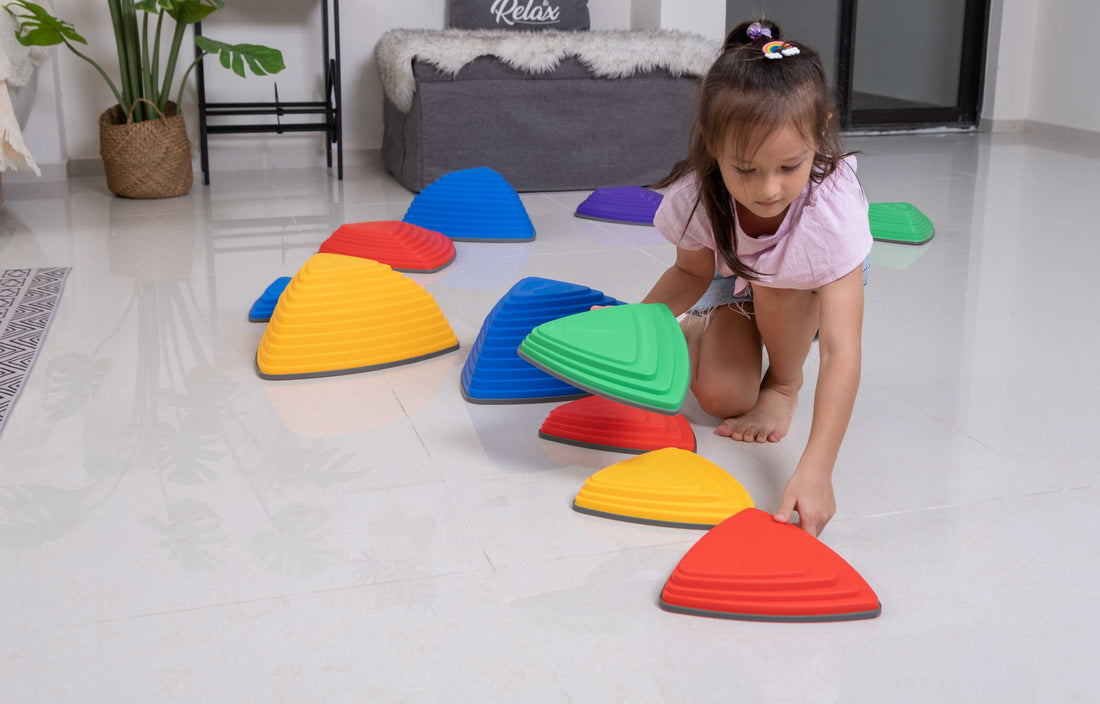
Colorful Steps: Using Stepping Stone Games to Teach Colors and Shapes
Share
The world of a child is a canvas painted with the bright hues of curiosity and the bold outlines of exploration. Stepping stone games, a familiar sight in playgrounds and backyards, can be more than just play equipment; they're also powerful tools for learning. This article offers parents innovative ways to transform these playful hops into steps toward understanding colors and shapes.
Creating a Learning Landscape
Begin by designing a stepping stone path that doubles as a colorful mosaic of learning. Use stones of different colors, shapes, and sizes to spark visual interest and curiosity. This tactile and visual diversity is key to engaging children in the learning process.
Color Identification Through Play
Initiate the game by asking your child to jump onto specific colors. This not only teaches color recognition but also encourages children to make associations between verbal instructions and visual cues. Enhance the challenge by combining colors, like asking them to hop on a "yellow circle" or a "blue square."
Shape Sorting by Leaping
Use the game to introduce basic and complex shapes. Start with primary shapes such as circles, squares, and triangles, and then introduce pentagons, hexagons, and octagons as your child advances. Encourage them to only step on shapes you call out, reinforcing their shape identification skills.
Counting and Pattern Formation
Incorporate counting into the game by numbering the stones or grouping them by color and shape. Create simple patterns to jump in sequence — for example, "red, blue, red, blue" — and ask your child to continue the pattern. This not only reinforces color and shape knowledge but also introduces early math concepts.
Sensory and Memory Games
The textured surface of stepping stones can be utilized to enhance sensory experiences. Use different materials for each color and shape, and encourage children to describe how they feel. Additionally, create a memory game by having children recall which color or shape they saw in specific locations.
Interactive Storytelling
Turn the stepping stone game into a storytelling adventure. Each color and shape represents a part of the story, and as children hop from one to another, they help the story unfold. This technique not only teaches colors and shapes but also fosters creativity and narrative skills.
Crafting with Children
Involve children in making their own stepping stones. This hands-on activity allows children to learn about colors and shapes through creating and playing. It's a fun art project that has the added benefit of enhancing fine motor skills.
Environmental Learning
Teach children about the environment through colored and shaped stones by associating them with real-world objects — blue for water, green for leaves, and so on. It helps children to make connections between their immediate environment and the wider world.
Conclusion
Stepping stone games are a splendid mix of fun and learning. They provide a multi-sensory experience that can be tailored to educational needs. By using these games to teach colors and shapes, parents can help their children make leaps in cognitive development while jumping from stone to stone. It's a simple yet effective way to incorporate learning into play, ensuring that the lessons learned are as enduring as they are enjoyable.
